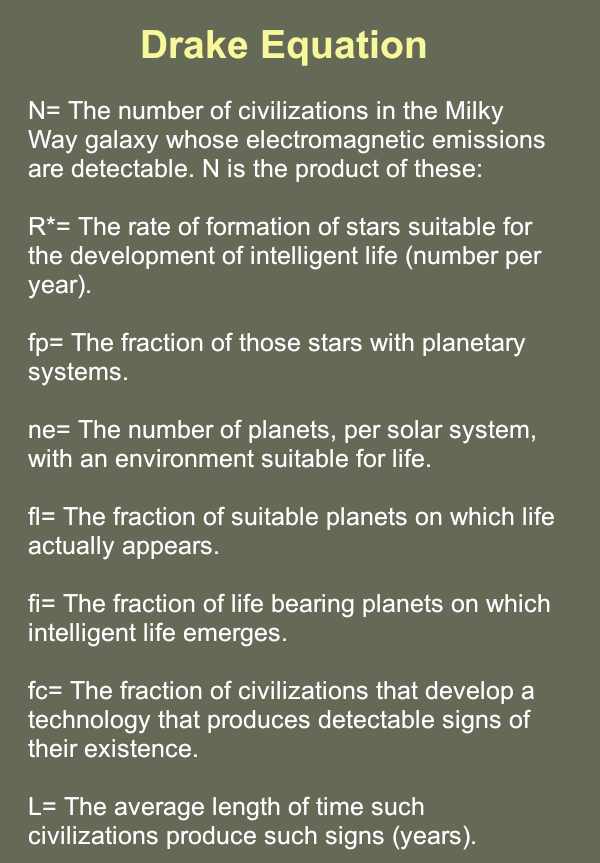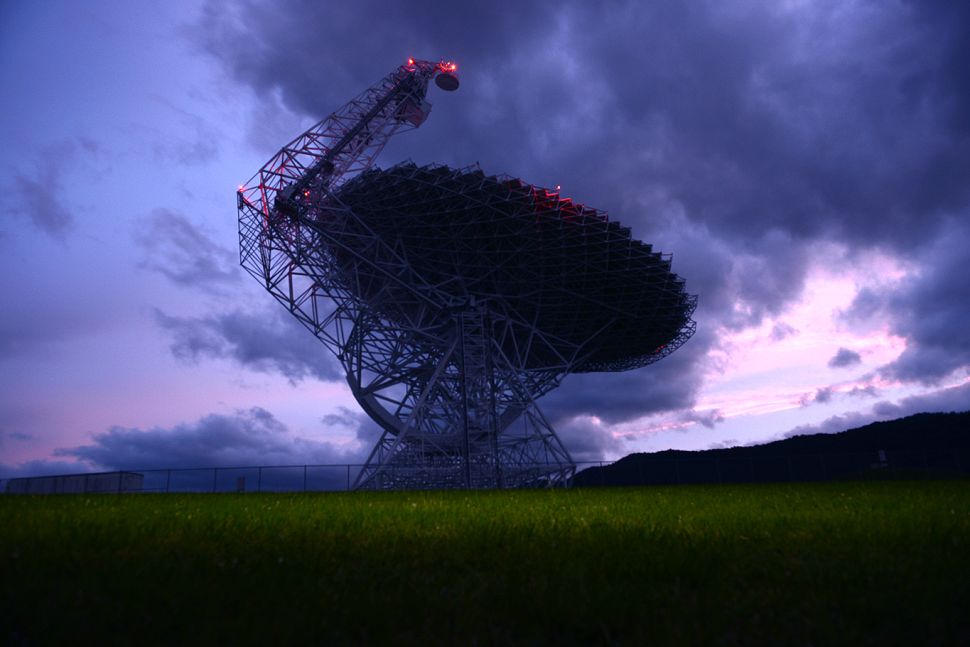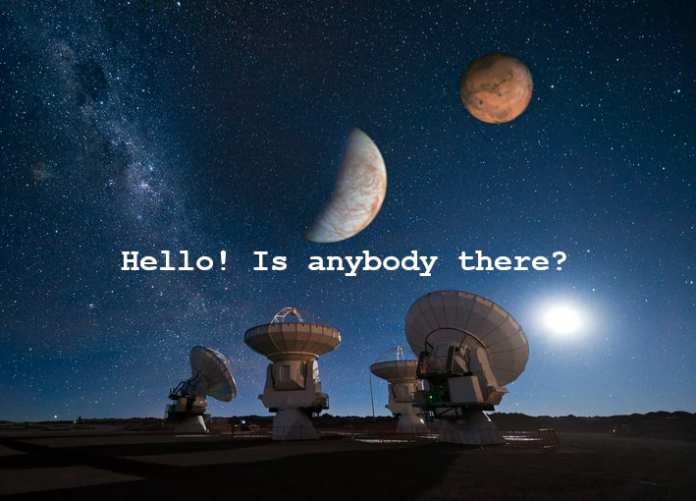Manoj Pandey*
In our series “Myths Under the Lens” we publish articles scrutinizing subjects that agitate our minds. In this article, the author discusses whether there can be life outside the Earth.
A word of caution! If you are not too curious to know the status of human knowledge about alien life and the possibilities that exist, the present article is going to look boring to read: TL;DR [Too Long; Don’t Read].
In the last article in this column (Have aliens ever visited the earth?), we came to the conclusion that a visit by some intelligent extraterrestrial beings to the earth is not improbable but there is no evidence of that. I had promised to come up with a broader discussion on the probability of any form of life anywhere beyond the earth. Let’s discuss that now.
Questions beget questions
The child-like curiosity whether there is life beyond the earth has led to serious scientific questions, each question giving rise to more questions as scientists try to fathom the depths of the universe. Some major questions that bother them are:
- What is the probability that in this vast universe, there are at least some celestial bodies that can nurture life? Or is the Earth so unique that there is not even one other planet with life-bearing qualities among trillions of trillions planets?
- If there are places that are suitable for creation and sustenance of life, what is the probability that life would actually take shape?
- Can a rudimentary form of life be there in nearby planets such as Mars? Why could it not develop in them even after millions of years of its presence on the Earth?
- If there is life beyond the earth, must it be dependent on water and organic molecules or there could be a very different way of sustenance of life?
- Can comets and meteors transport rudimentary form of life across planets? If so, is it possible that life on the Earth was ‘seeded’ from some other planet ?
- Must all types of life follow evolution as is supposed to have happened on the earth?
- If there is life around us, some of it must be equally or more evolved. Why are we not able to find them yet and why none of them has tried to contact us?
- If there is highly intelligent life somewhere, will it be benign or inimical to us? Should humans even try to find and contact such intelligent creatures?
Scientists have found numerous indications of life in the space but almost all could be explained away subsequently as features that can happen without life. That, however, does not lead to a conclusion that extraterrestrial life does not exist. In ‘looking for a needle in the haystack’, we have yet searched just a few strands of hay.
Hypotheses, probabilities, imponderables
There are hundreds of hypotheses on the origin and advancement of life in the universe. All are based on a number of assumptions, some of which are so speculative that they may not be true. So, the probabilities go from zero to billions depending on what value you give to an assumption.
Take for example, the number of places that can have life in at least a primitive form.
A number of astronomical findings in the recent years have, instead of clarifying, made estimation of estra-terrestrial life even more difficult – because new uncertainty factors have come into notice.
A hypothesis, whose main proponent is Robin Hanson, says that life would evolve anywhere in the universe in the following steps:
- The right star system (including potentially habitable planets)
- Reproductive molecules (e.g. DNA)
- Simple single-cell life
- Complex single-cell life
- Sexual reproduction
- Multi-cell life
- Tool-using animals with intelligence
- A civilization advancing to the stage of present day humans
- Colonization explosion into other places in the universe
The argument goes further that if the humans have not been able to find even one proof of highly advanced life (out of millions of places it was thought probable), that could be because the last step is improbable. It is also postulated that if any one of the steps does not take place, the advancement of life stops there.
Some scientists believe that the Earth is unique with its right chemical composition, abundance of water that is not too salty, right temperatures, low volcanic and meteoric activity in later stages of its life, thick atmosphere that stops harmful radiation, etc, which have helped in creation and long-drawn evolution of life. This ‘rare earth theory’ got a boost as two scientists brought out a book Rare Earth: Why Complex Life Is Uncommon in the Universe in 2000. They have argued that the Earth is in the right place in the right galaxy and has the right type of sun and moon, and revolves at the right distance from the sun, which have created exceptional life-supporting systems.
In terms of probability, the rare earth equation brings the number of earth-like (= life creating and sustaining) celestial bodies to one (the Earth) or just a few – depending upon what value is assigned to the uncertain factors.
On the other hand, using the same equations, some scientists have come to the conclusion that there is no question of not having millions of exoplanets (planets outside our solar system) with the right ingredients to nurture life, out of the many trillion trillion stars that the universe is supposed to have.
Some scientists have argued against having a narrow, earth-centric vision of life, which requires that nitrogen, carbon, oxygen and hydrogen are a must for creation of life; liquid water is also needed to support life; and life needs moderate temperatures. They aver that life might exist with molecular combinations that are not fit for life on the earth, and life-processes about which we do not know.
Let us now examine how many worlds could have a highly evolved form of life.
Those who believe in extreme rarity of intelligent life in the universe argue that the earth is a cosmic fluke of sorts in which everything that is required for evolution of an intelligent life is in the right quantity. Even then, this planet, the Earth, has been able to produce just one species that is so evolved that it can create sophisticated technology and communicate with radio signals.
On the other hand, the majority of scientists argue that given the vastness and long age of the universe, there is no question that highly advanced forms of life have not evolved anywhere. According to one estimate, by Harlow Shapley (1959), 100 million worlds could exist where advanced forms of life have prospered because these places have the right combination of chemicals, temperature, water, and days and nights to support life, and these worlds are old enough for evolution.
Enrico Fermi, a physicist, considered a series of probabilities about the existence of space-travelling extra-terrestrial life and, in 1950, posed a witty question that came to be known as Fermi Paradox, “But where is everybody?”
Fermi’s argument is that if there are many stars older than the sun by billions of years and with earth like satellites, the living beings in them should have started space travel millions of years ago and would have traversed the entire space around us even at a slow inter-steller speed. If so, why are there no aliens around us?
One reason for highly evolved societies not going for space explorations or colonization (step 9 of the Hanson hypothesis mentioned above) could be due to their deliberate decision or due to constraints. For example, their technology might have developed in miniature ways or under the surface, or they decided against being cosmic adventurists.
In 1961, another scientist, Frank Drake, gave an equation called the Drake Equation, to find the likelihood of intelligent extraterrestrial life in our own galaxy, the Milky Way.
There are some factors in the equation that are highly conjectural, and hence this equation has been criticised for in-built inaccuracies. Nevertheless, the equation gives a base for making an educated guess about the number of extraterrestrial civilizations in the galaxy. Assigning minimum and maximum numbers to the uncertain factors, the estimate of intelligent civilizations in the galaxy varies from 10,000 to 100 million.

The search for intelligent life does not stop at observing the skies or trying to guess who created unusual artefacts such as the pyramids when humans did not have advanced technology. Humans have also been proactively trying to connect with unknown aliens.
In 1972, a plaque showing humans was sent aboard Pioneer 10 spacecraft so that intelligent aliens would know about our civilization if they intercepted the craft. After that, more sophisticated human ‘time capsules’ have been sent on space probes.
Starting 1974, radio signals have been sent to the outer space with the hope that there will be a response from some intelligent alien somewhere, but there has been no luck so far. Like SETI (Search for Extraterrestrial Intelligence) projects on searching out aliens in the outer space, there is METI (Messaging Extraterrestrial Intelligence), the effort to reach out to them. According to one estimate, there could be no fewer than 10,000 civilizations with radio technology within our galaxy, but except for a few, which later came out to be due to signal corruption, no unusual signals have been received so far.
There also are thinkers and scientists who feel that trying to connect with aliens is an irresponsible act and is fraught with huge risk in case aliens do exist and can reach us. Famous scientist Stephen Hawking warned in 2010 that aliens might be dangerous rather than friendly to us. Alluding to the exploitative and brutal nature of human advancement, he said, “We only have to look at ourselves to see how intelligent life might develop into something we wouldn’t want to meet.”
Looking for biosignatures and technosignatures
For proof of life beyond the earth, astrobiologists have been looking for objects that can be associated with life. These are called biosignatures. Presence of water, methane and amino acids, for example, makes it very likely that some form of life exists in that place.
For finding such biosignatures in very distant planets, scientists keep evolving new concepts. One such concept is to examine the light falling on a planet from its star, and check what frequencies are absorbed/ reflected by the planet’s surface and atmosphere.
All types of observations have their limitations when distances are in millions of miles. At such distances, signals thin out and are corrupted. Even if a celestial body is buzzing with life, it may not show any pattern to us. Just for the sake of lay understanding, scientists refer to our modern wireless communications: so much radiation emanating from a planet would mean the planet’s temperature is extremely high and the Earth could be taken as an inhabitable planet. As another such example, if someone a million miles away were to look for artificial patterns on the Earth, they would not have found any till a few thousand years back though evolved animals sucha as birds and mammals have been inhabiting the earth for many million years.
For knowing whether highly advanced life exists in distant planets, scientists look for ‘technosignatures’ – things that can be created by creatures using advanced technology. So, scientists are looking for unnatural electromagnetic signals, polluting gases and megastructures built around the planet to harness energy.
The limitations are enormous. We still do not have telescopes powerful enough to clearly see what is happening too far away, even by using sophisticated telescopes and computers for processing optical, infrared, radio frequency, laser and other signals. We do have powerful space telescopes but they have limitations. Our space probes have also not been able to travel much far, in terms of astronomical distances. The distances are so enormous that even the nearest exoplanet (a planet outside our solar system) would take many years to reach even at the speed of light (nearly 3,00,000 km/ second).
Life, life everywhere!
Despite the limitations of technology, time and distances, biosignatures seem to be present throughout the space.
The most accepted hypothesis of origin of life is that of abiogenesis. It says that certain chemical and physical conditions on the earth triggered reactions among inorganic molecules to produce complex molecules called amino acids. These then gave rise to a primitive form of ‘life’ or molecules that could replicate and pass on their properties to their progenies. Water seems to have played an important role in early synthesis of life forms (single-cell creatures) from ‘living’ molecules.
So, the argument goes that such conditions prevailing in other planets and satellites should have led to creation of life in those places. Water thus seems to be a highly likely sign of life, even if in a rudimentary form.
Till some years back it was supposed that water is available only on the earth. Since water is an essential prerequisite for life to evolve the way it has evolved on the earth, a lack of water in other celestial bodies was taken as a sure sign that they could not harbour life.
In the last two years, we have known that there are salt-water lakes under the surface of Mars. Recently, abundant water has also been discovered in a dwarf planet Ceres in the asteroid belt in our own solar system. Pluto and Moon and some satellites of bigger planets are also supposed to have at least some amount of water.
Given water, carbon, hydrogen, nitrogen and oxygen and right conditions, it has been possible to create amino acids and even nucleic acids in the lab. Nuceic acids are what make RNA and DNA and can self-replicate. Amino acids are the building blocks of proteins – chemicals essential for higher forms of life.

As early as 1969, scientists found amino acids in a meteorite that fell near Murchison, Australia. Among the latest finds of precursors of early life in the space, glycine (an amino acid) was found in comet Wild-2 in 2006 and glycine along with Phosphorus in comet 67P in 2014 onwards. It is noteworthy that comets are supposed to be carrying such chemicals to planets for many billion years.
Among the candidates that fit the bill of being habitable (in addition to having water) in our solar system, Europa and Io (Jupiter satellites), Titan and Enceladus (Saturn satellites), and Mars are likely to have a rudimentary form of life.
Out of about 4000 exoplanets studied so far, 47 are in the ‘habitable zone’, i.e. they have moderate radiation and temperature levels that can result in liquid water and hence water-based life, the type that is available on the earth.
When it comes to the total number of planets that seem habitable, the estimates have grown manifold in recent years. After refining the Drake Equation with new finds, scientists say that there could be more than 300 million planets with conditions similar to the earth within the Milky Way galaxy. We can take this with a pinch of salt, as this too is a conjecture, though a more informed one. It is also now estimated that as high as half of the sun-like stars in the universe have planets that can host life (this was thought to be about one in five earlier). Taken together, such estimates point to a very high probability of life beyond the Earth.
Is life inevitable?
Possibly so. The weight of logic and findings goes with the hypothesis that life is inevitable and not a fluke. Life has to be there when life creating conditions converge. Its biology need not be like that on the Earth. If it is technologically advanced, the evolution need not take the route the Earth’s life is supposed to have taken. If it is highly advanced, its willingness and ways to communicate with extraterrestrials need not be like our scientists.
On our own planet, space technology is taking big strides; new space probes are being sent out; new telescopes are in the making, laser-propelled mini probes are being conceptualised… Yet, it may take a decade before we have clear signals of life outside the earth. Perhaps sooner. Whenever that happens, it is going to be the news bigger than the nuclear bombing of Hiroshima or COVID pandemic or whatever you think has been the biggest story in human history.
Further reading:
- Ceres: An ocean world in the asteroid belt
- Drake equation
- Extraterrestrial life
- How many alien civilizations are out there? A new galactic survey holds a clue.
- Life probably exists beyond Earth. So how do we find it?
- Rare Earth hypothesis
- Rosetta’s comet contains ingredients for life

*About the author: This article has been contributed by Manoj Pandey. He does not like to call himself a rationalist but insists on scrutiny of apparent myths as well as what are supposed to be immutable scientific facts. Please don’t take the views of the author as the views of Raag Delhi.



